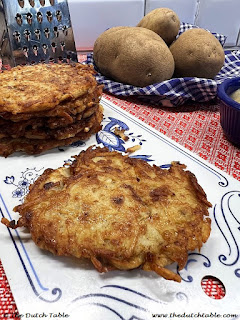 Summertime is Kermis time! If you grew up in the Netherland as a kid, at some point or another the kermis (fair) would have come to town. The zweefmolen (merry-go-round), reuzerad (ferris wheel), the botsautootjes (bumper cars), and the rups (the caterpillar) were popular choices, the latter especially with young couples as a green canopy would close over the cars, allowing the teenagers a quick kiss away from prying eyes.
Summertime is Kermis time! If you grew up in the Netherland as a kid, at some point or another the kermis (fair) would have come to town. The zweefmolen (merry-go-round), reuzerad (ferris wheel), the botsautootjes (bumper cars), and the rups (the caterpillar) were popular choices, the latter especially with young couples as a green canopy would close over the cars, allowing the teenagers a quick kiss away from prying eyes.
All those gravity and g-force defying attractions were lost on me however, as the first things I would seek out is the gebakskraam (the pastry booth), the snoepkraam (the candy booth) and the schietkraam (the shooting gallery). If the gebakskraam had oubliewafels and oliebollen, if the snoepkraam had giant spekkies (marshmallows) and wijnballen (large hard red candy globes), and if the shooting gallery had tin cans as targets (they were a lot easier to hit, guaranteeing me a stuffed toy or a goldfish!), it was a great funfair in my eyes!
I was reminded of those grand times when I read that the Kermis, as a culture, had been added to the ever growing list of Dutch cultural heritages. Memories came flooding back, and I instantly had a craving for oubliewafels from the gebakskraam at the fair: crispy, sweet waffles rolled into a large tube, and filled with sweet whipped cream. These fall into the category of tricky-pastries-to-eat, like the tompouce or the Bossche Bol, because one bite into the waffle may cause the cream to shoot out the other end, so you've been warned ;-)
The oubliewafels are rolled a bit larger than rollegies, for example, so find a handle, or dowel with a larger circumference, approx. 1 inch (approx. 2.5 cm). You will need a waffle iron for ice cream cones or pizzelles.
Oubliewafels met slagroom
1 cup (200 grams) sugar
1 teaspoon vanilla flavoring
2 eggs
2 cups (250 grams) flour
2 cups (500 ml) heavy whipping cream
1/2 cup powdered sugar
Optional: colored sprinkles
Cream the butter with the sugar until it's pale and fluffy, about five to six minutes, at medium speed. Add the vanilla flavoring, and add one egg at a time until it's absorbed into the mix. Fold in the flour a few spoonfuls at a time until the dough is soft but homogenous.
Divide into ten equal pieces (easier if you have a scale!), and roll into balls. Place on a plate, cover and put in the fridge for about half an hour.
Heat the waffle iron. Place one dough ball above the middle line, towards the back of the iron and press down carefully, until the dough has spread into a large circular waffle. Bake according to manufacturer's instructions, but it usually doesn't take very long for the waffle to be golden and crisp, about a minute.
Quickly remove the hot waffle from the iron (I use a large silicon spatula to lift it off the hot plate), and roll the waffle around the handle or dowel - do it fast because as the waffle cools down it becomes hard! Press the dowel lightly down onto where the two ends meet, so that you get a little bit of a flat bottom and the ends stick together. Let it cool for a second or two, and then slide the waffle tube off the dowel. Set aside to cool. Make the rest of the waffle tubes.
When you are ready to serve, whip the cream into stiff peaks and fold in the powdered sugar. Add it to a piping bag with a star tip, and fill the tubes. Use the tip to make a pretty rosette on each end, and top with the colored sprinkles (optional). Stack the waffle tubes on a pretty plate and serve immediately - the moisture in the whipped cream will slowly soften the waffle, making it harder to eat.
Makes 10.












